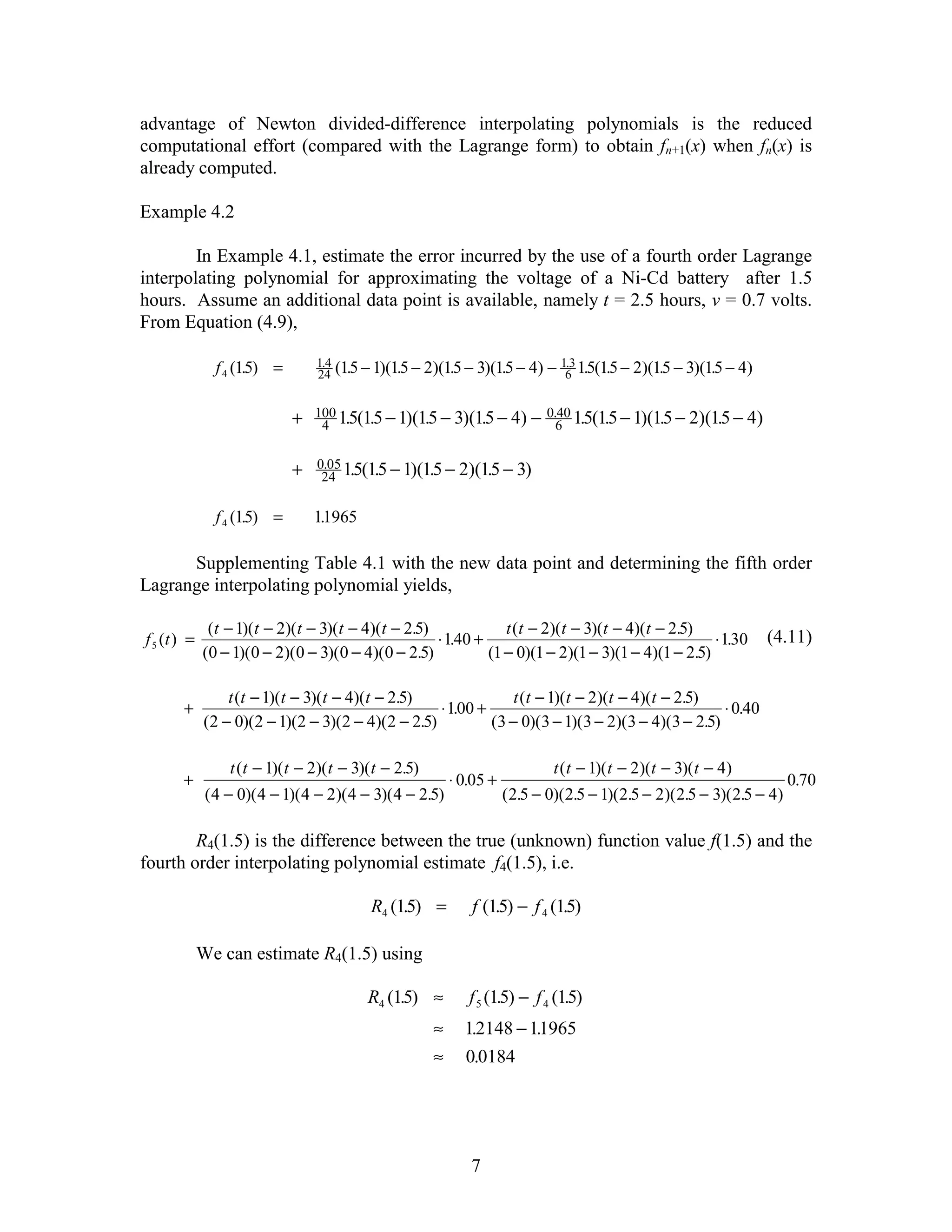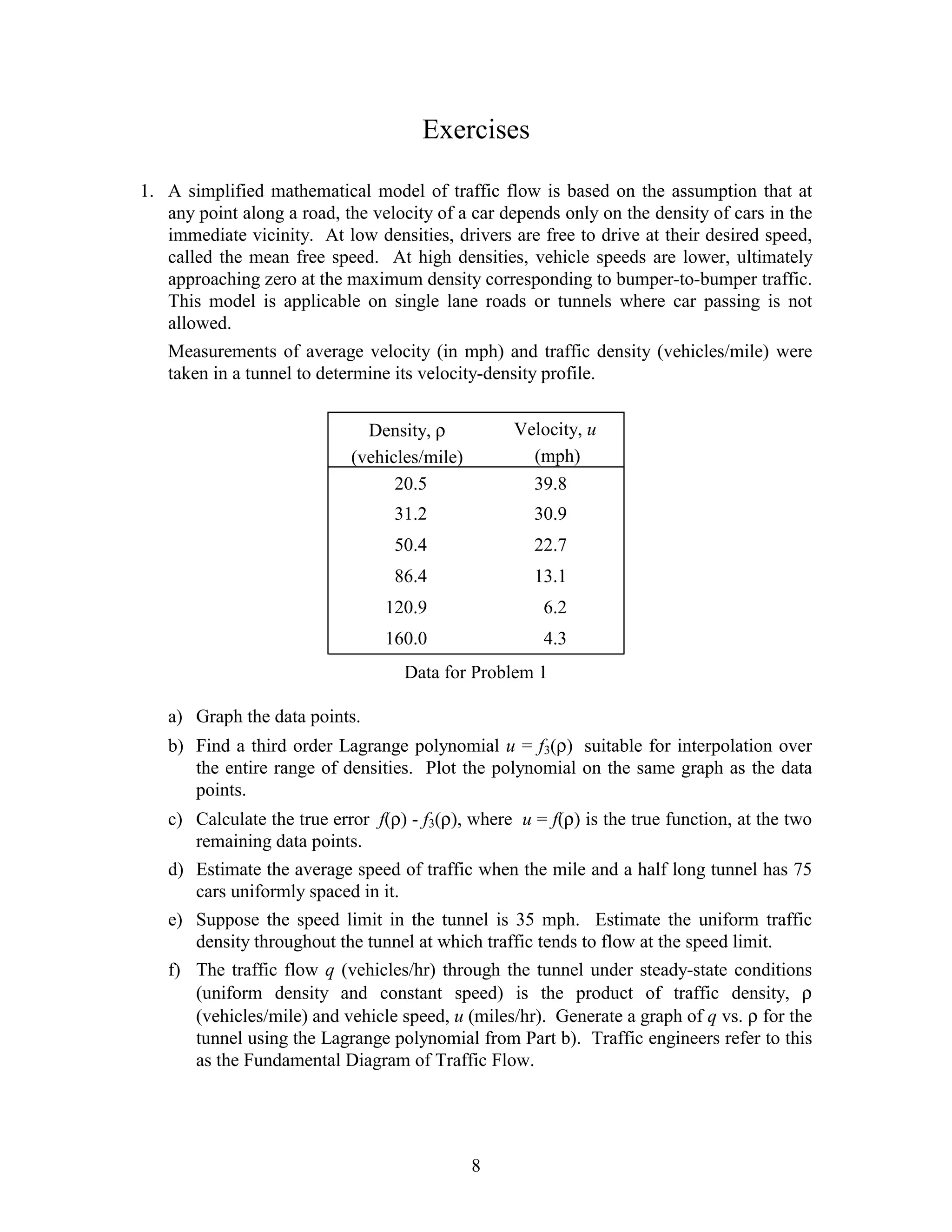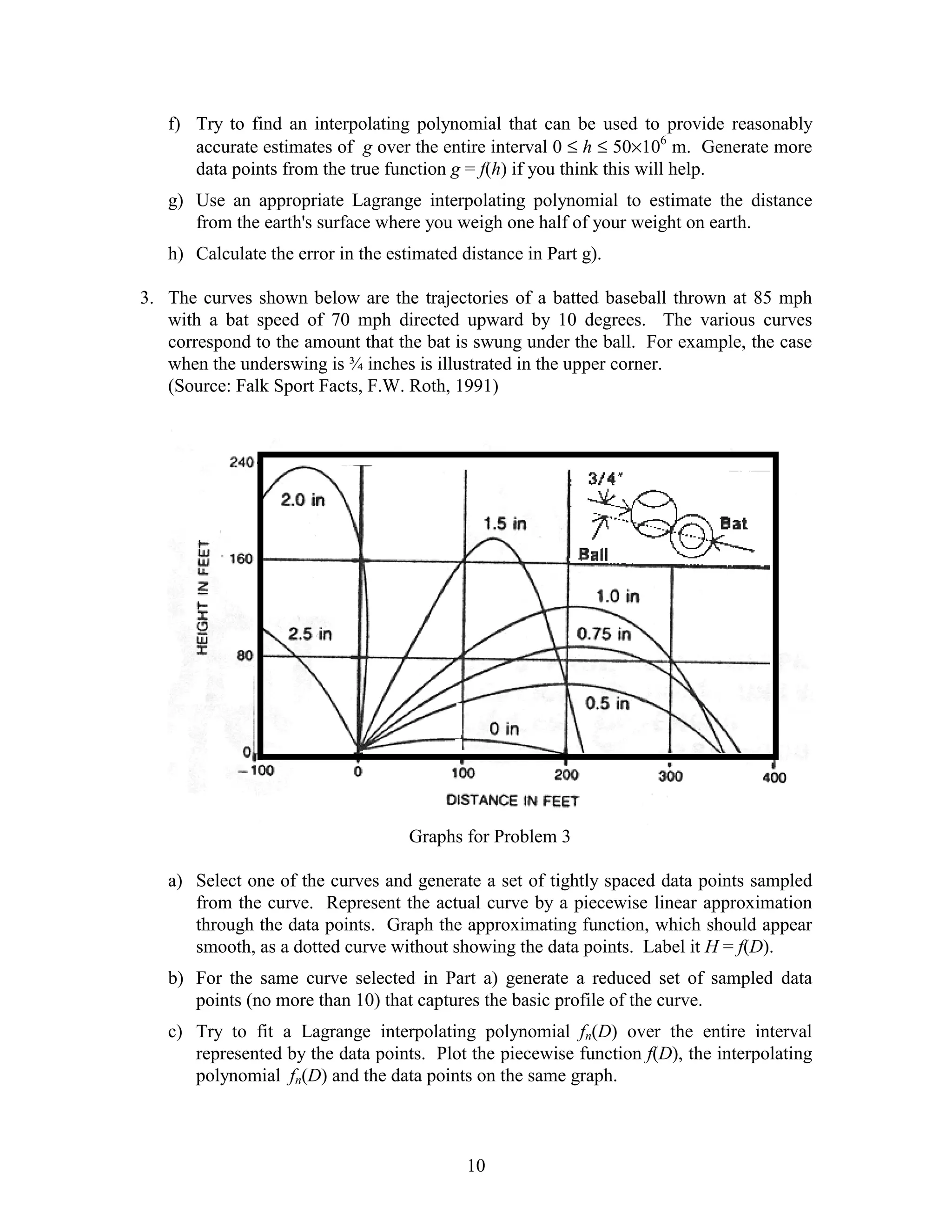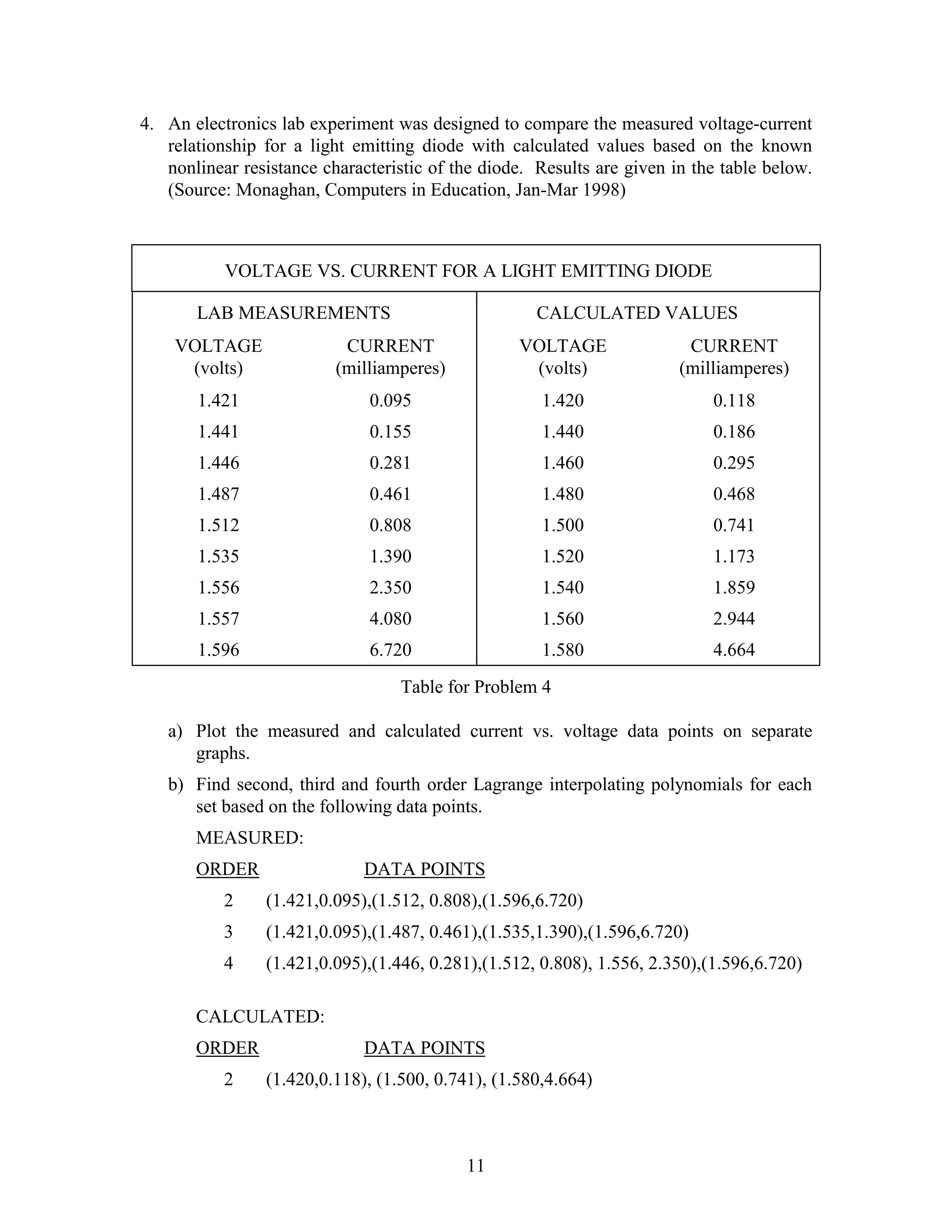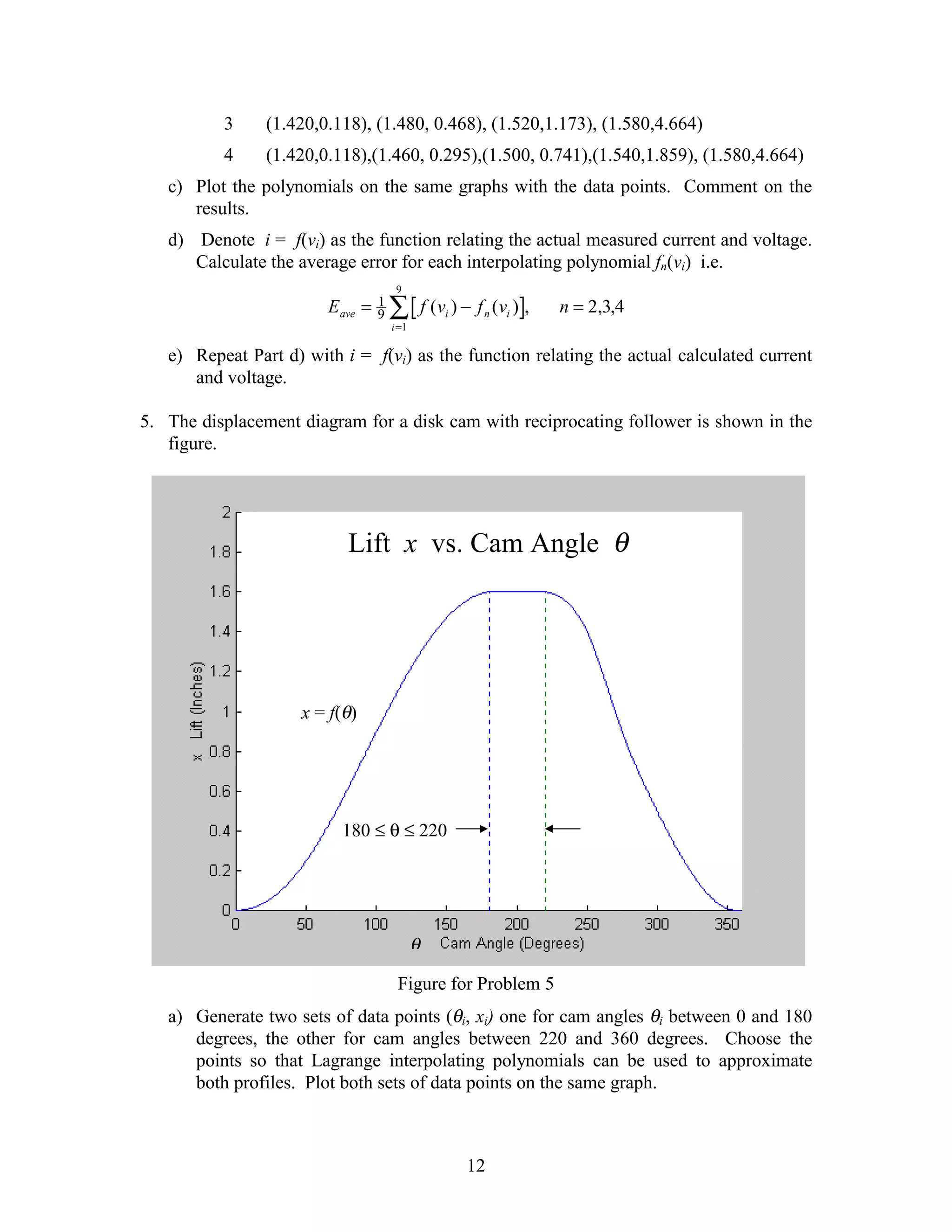The document discusses Lagrange interpolating polynomials, which provide an alternative way to write an nth order polynomial that passes through a given set of n+1 data points. The Lagrange interpolating polynomial is defined as the sum of nth order Lagrange coefficient polynomials multiplied by the y-values at each data point. This allows the interpolating polynomial to be determined directly from the data points using simple formulas, without solving systems of equations. An example demonstrates computing the 4th order Lagrange interpolating polynomial for voltage data from three different batteries over time.
![Section 4 Lagrange Interpolating Polynomials
In the previous sections we encountered two different ways of representing the
unique nth order (or lower) polynomial required to pass through a given set of n+1 points.
Yet another way of writing the polynomial, constrained in the same fashion, is presented
here. It is referred to as Lagrange's form of the interpolating polynomial.
Once again, we assume the existence of a set of data points (xi, yi), i = 0, 1, …, n
obtained from a function f(x) so that yi = f(xi), i = 0, 1, …, n. A suitable function for
interpolation I(x) is expressible as
n
I ( x) =
∑
i =0
Li ( x ) ⋅ f ( xi ) (4.1)
= L0 ( x ) ⋅ f ( x0 ) + L1 ( x ) ⋅ f ( x1 ) +.....+ Ln ( x ) ⋅ f ( x n ) (4.1a)
The functions Li(x), i = 0, 1, …, n are chosen to satisfy
R0
| x = x0 , x1 ,...., xi −1 , xi +1 ,...., xn U
|
L ( x) = S V (4.2)
i
|1
T x = xi |
W
Before we actually define the Li(x) functions, let's be certain we understand the
implications of Equations (4.1) and (4.2). The best way to accomplish this is simply to
choose a value for "n" and write out the resulting equations. Suppose we have the four
data points [xi, f(xi)], i = 0, 1, 2, 3. From Equations (4.1) with n = 3, the interpolating
function I(x) becomes
3
I ( x) =
∑
i=0
Li ( x ) ⋅ f ( xi ) (4.3)
= L0 ( x ) ⋅ f ( x 0 ) + L1 ( x ) ⋅ f ( x1 ) + L2 ( x ) ⋅ f ( x2 ) + L3 ( x ) ⋅ f ( x3 ) (4.3a)
and it remains to be shown that I(x) is identical to f(x) when x is any one of the four data
points. Evaluating I(x) at x0, x1, x2 and x3,
I ( x0 ) = L0 ( x0 ) ⋅ f ( x 0 ) + L1 ( x0 ) ⋅ f ( x1 ) + L2 ( x0 ) ⋅ f ( x 2 ) + L3 ( x 0 ) ⋅ f ( x3 ) (4.4)
I ( x1 ) = L0 ( x1 ) ⋅ f ( x0 ) + L1 ( x1 ) ⋅ f ( x1 ) + L2 ( x1 ) ⋅ f ( x2 ) + L3 ( x1 ) ⋅ f ( x3 ) (4.4a)
1](https://image.slidesharecdn.com/interplagrange-130224134629-phpapp02/75/Interp-lagrange-1-2048.jpg)
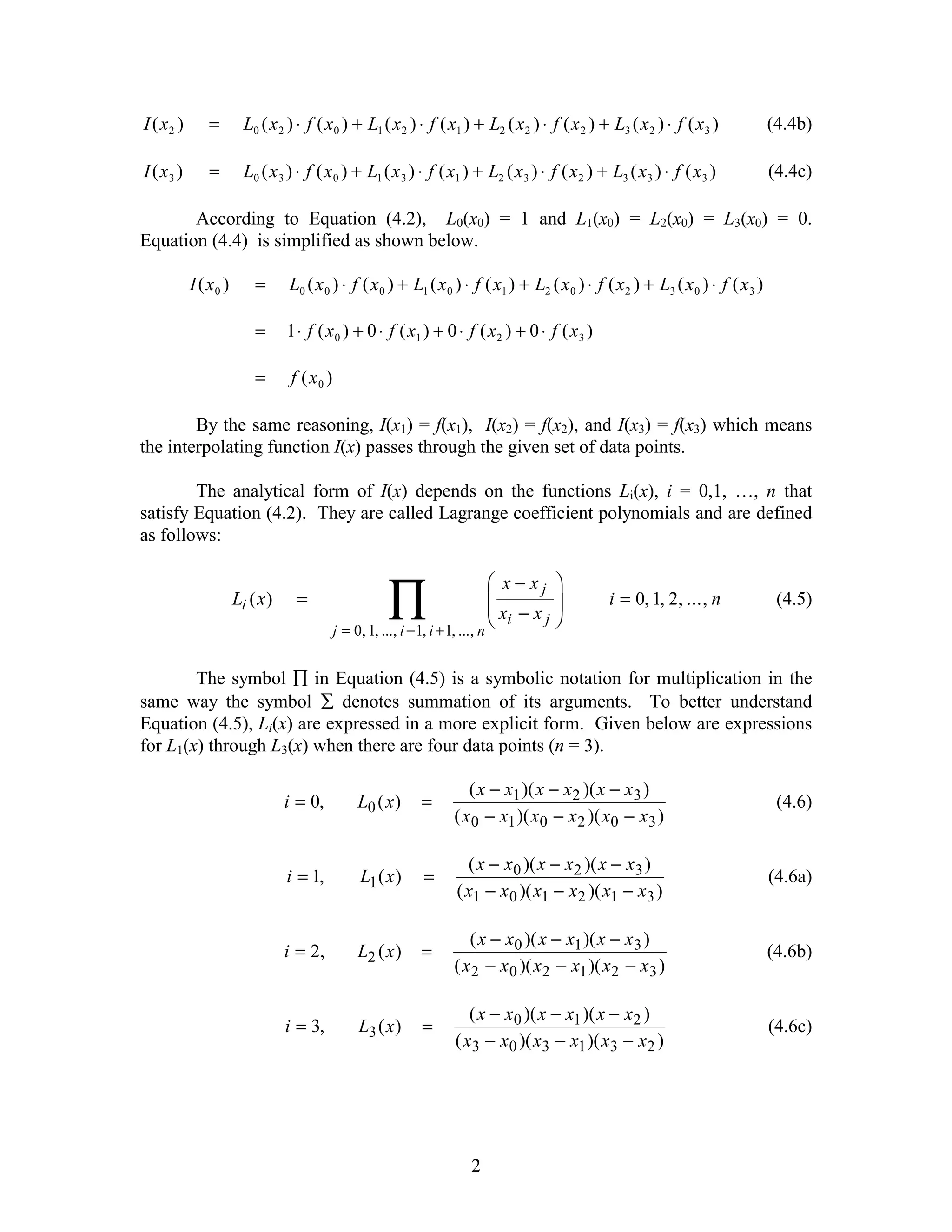
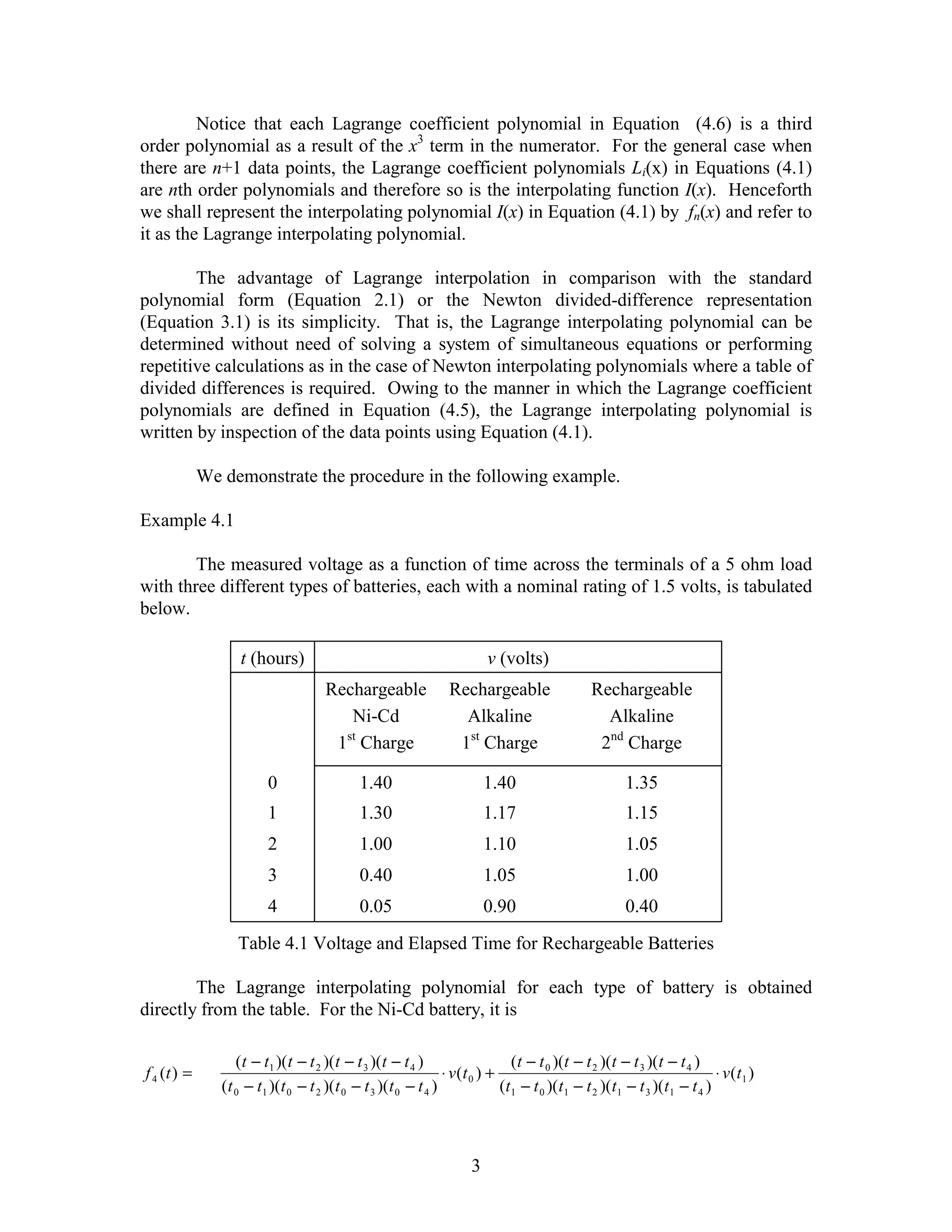
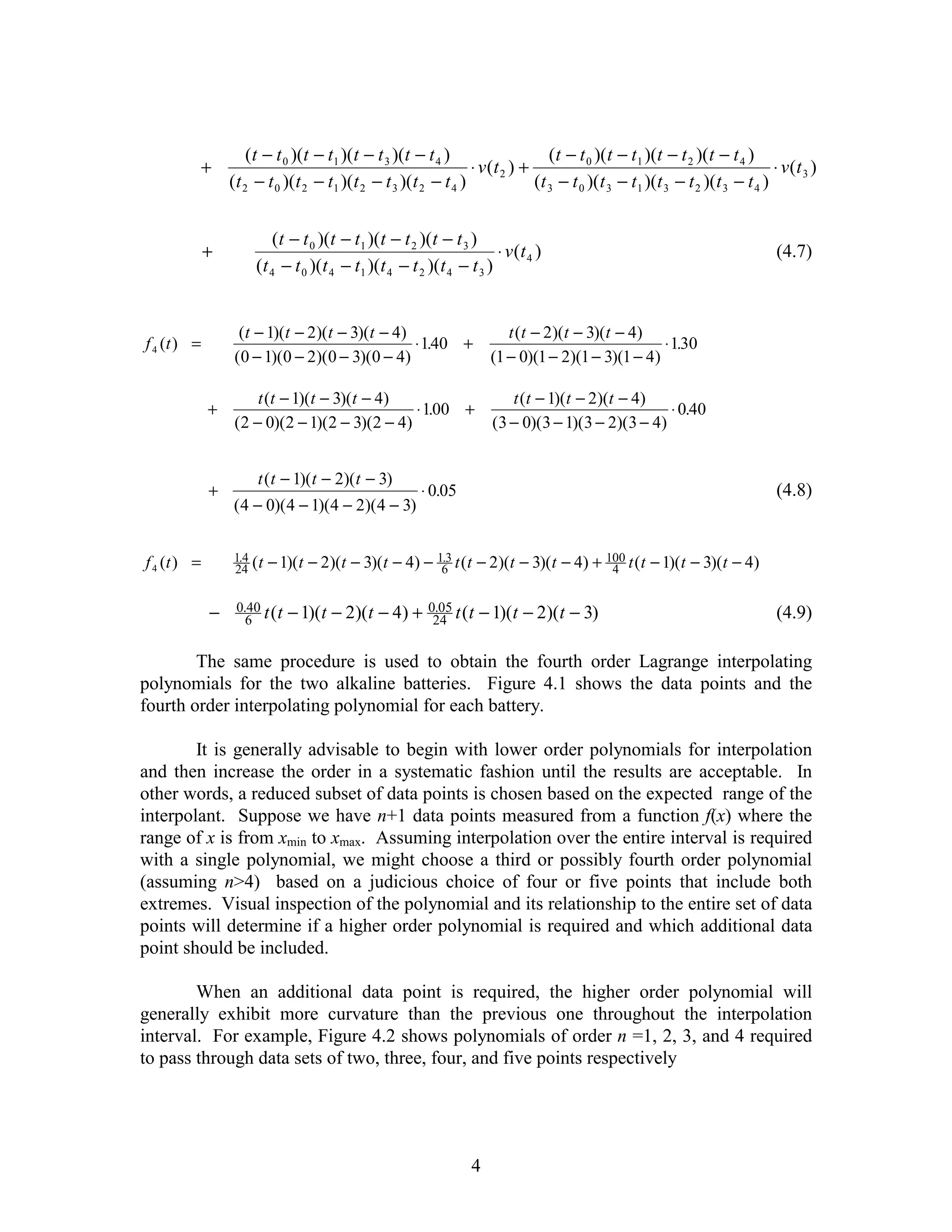
![Alkaline,
1st Charge
Alkaline,
2nd Charge
Ni-Cd
Figure 4.1 Fourth Order Interpolating Polynomials For Battery Data in Table 4.1
It's clear that the quadratic polynomial f2(x) exhibits more curvature than the
linear function f1(x) which of course has none. This is possible due to the presence of the
x2 term in f2(x). Similarly f3(x) curves more than f2(x) due to the additional point [x3,
f(x3)] and the fourth order term x4 in f4(x) accounts for the added curvature compared to
f3(x) over the interval (0,4).
With an nth interpolating polynomial in standard form, Equation (2.1), or the
Newton divided-difference form, Equation (3.1), there is only one high order term, i.e. a
single term with xn. This is in contrast to the Lagrange form of the interpolating
polynomial, Equation (4.1), in which each term of the overall expression is an nth order
polynomial. If the order of the interpolating polynomial is to be increased from n to n+1
by including an additional data point, each Lagrange coefficient polynomial in Equation
(4.5) increases in order from n to n+1 as well. Consequently, the entire Lagrange
interpolating polynomial must be recomputed.
Despite the fact interpolating polynomials in standard form contain a single high
order term, an extra data point requires recalculation of all the coefficients ai, i = 0,1,2,
…, n in addition to the new coefficient an+1. The system of equations to be solved was
considered in Section 3.2 and enumerated in matrix form in Equation (2.3). The
Vandermonde matrix and the column vectors of coefficients and function values in
Equation (2.3) are (n+1) × (n+1), n × 1, and n × 1, respectively.
5](https://image.slidesharecdn.com/interplagrange-130224134629-phpapp02/75/Interp-lagrange-5-2048.jpg)

